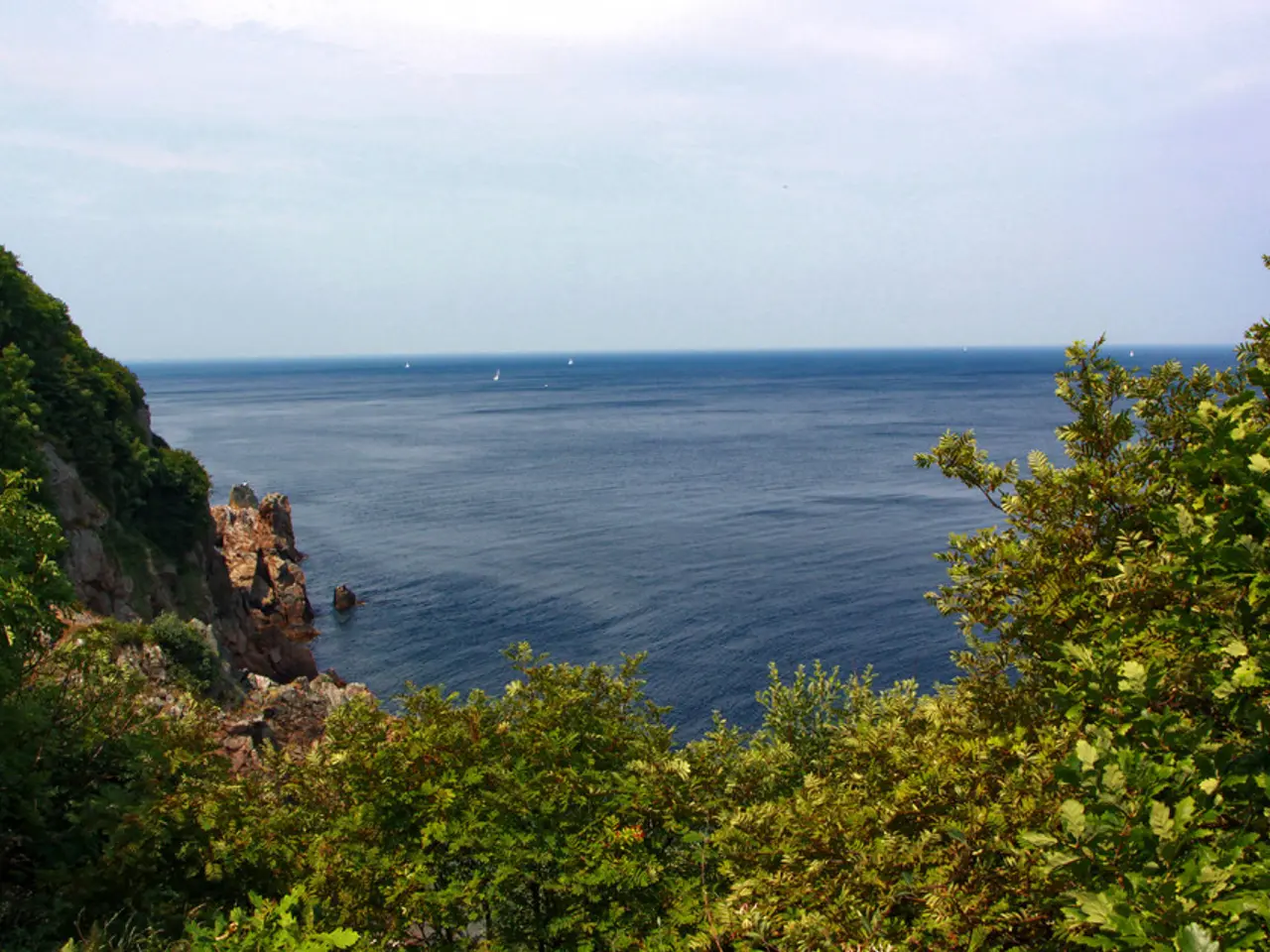Optimal Shade-Providing Trees for Sustainable Gardens in Warm Regions
In hot climates, creating a sustainable landscape is essential for both the environment and community well-being. One key element in this endeavour is the strategic selection and placement of shade trees. These natural wonders not only provide a cooling effect, but also contribute to a more resilient and productive ecosystem.
Shade trees play a pivotal role in managing moisture levels in the soil, making them an invaluable asset in drought-prone regions. They help conserve water by reducing evaporation and promoting healthy soil structure.
Native trees are often the unsung heroes of the landscape, as they are well-adapted to local conditions and require less care than trees from other regions. Popular native shade trees for hot climates include the Pecan, American Holly, White Oak, Wild Plum, and Mulberry. In Southwest Texas, native species like Ashe Juniper and Plateau Live Oak (Mountain Cedar and Live Oak) are common in dry uplands. However, it's important to note that monocultures can increase disease risk, such as oak wilt.
Prominent drought-tolerant, heat-resilient, and fast-growing options include the Live Oak (Quercus virginiana), Cedar Elm (Ulmus crassifolia), Mexican White Oak (Quercus polymorpha), Texas Ebony (Ebenopsis ebano), and Desert Willow (Chilopsis linearis). These trees offer excellent shade provision while being well-suited to hot, dry conditions.
Urban areas with trees can be up to 15 degrees Fahrenheit cooler than areas with less foliage. Shade trees can also grow up to 50 feet tall and can cut down on cooling costs in summer. Young trees need more water, but grown trees only need extra water in dry times.
Maintenance tips for shade trees in hot climates include water-efficient irrigation, using drip irrigation systems, adding thick mulch around the tree, proper pruning, watching for pests and diseases, and using organic control methods.
In permaculture, trees that do more than one thing are great, such as those that give fruit or nuts. Shade trees can grow fruits, nuts, or leaves that we can eat, providing both food and shade. They can also provide wood for mulch or building, making gardens more sustainable.
Shade trees create cooler, more humid microclimates that benefit understory plants and wildlife. They provide homes and food for many animals, like bees, birds, and small mammals.
Moreover, shade trees improve air quality by filtering out pollutants. They absorb carbon dioxide, helping fight climate change. Using drought-resistant trees in permaculture designs is smart, as it makes outdoor spaces beautiful and saves water.
By placing shade trees wisely and linking them to rainwater systems, you can build a thriving permaculture that supports both people and the environment. Holistic water management is important when incorporating shade trees into a permaculture design, as it keeps the system sustainable by balancing the water needs of the trees with the overall water budget.
Incorporating shade trees into permaculture designs is a smart move, as it makes landscapes more sustainable and resilient, improves growing spaces, and boosts the ecosystem. Shade trees make neighborhoods look better, boosting community pride and property values. They are a smart, green way to help communities thrive in hot climates.
- Incorporating guilds of drought-resistant, heat-resilient, and multifunctional shade trees can contribute significantly to sustainable water management zones in hot climates.
- Gardening with edible shade trees, such as fruit-bearing pecan, American holly, or mulberry trees, can promote food-and-drink sustainability and complement the overall community lifestyle.
- By growing various shade trees that cater to home-and-garden needs, like the Texas Ebony for mulch or building materials, we can foster greater sustainability in our relationships with the environment.
- Animals like bees, birds, and small mammals find refuge and sustenance in the more humid microclimates created by shade trees, which can enhance pet ownership experiences and encourage general-news stories on wildlife conservation.
- The cooling effect of strategically placed shade trees can reduce the need for air conditioning, leading to potential energy savings and lower cars' carbon footprints, contributing to self-development through education on sustainability.
- Arboreal landscapes in urban areas can lead to travel experiences that promote appreciation for natural beauty and highlight the role of sustainable practices in fashion-and-beauty industries seeking eco-friendly designs.
- By monitoring and maintaining shade trees effectively, focusing on techniques such as water-efficient irrigation, mulching, and pest and disease management, we can ensure their longevity and continued benefits for our growing lifestyles.
- Local community initiatives in hot climates can work towards revitalizing public spaces by planting and caring for diverse shade tree species, boosting community pride and property values, and contributing to the overall news narrative of environmental improvement.
- By utilizing swales, which are shallow channels for water flow, we can create a more efficient water management system within a permaculture design, integrating rainwater harvesting and the conservation of precious water resources.
- Educational programs centering around shade tree cultivation and permaculture can empower individuals to make informed decisions about their lifestyle choices, such as landscape design and consumption habits, which impact weather patterns and promote sustainability.
- Engaging in communal activities like gardening with shade trees further fosters relationships at the local level, promoting a culture of collaboration, stewardship, and mutual respect for one another and the environment.




